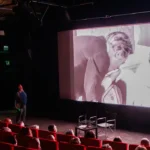The idea of creating a house of film – Casa del Cinema – was developed by the journalist and cultural manager Felice Laudadio. A proper venue was found in September 2001 at the Casina delle Rose in Villa Borghese, which had been completely abandoned for over twenty-five years, by kind concession of the City of Rome which owned the building. Fully restored at a cost of 7 million euro, it was inaugurated by the Mayor Walter Veltroni on September 18th, 2004.
Felice Laudadio was the director of Casa del Cinema through 2011, Caterina D’Amico from 2011 to 2014, Giorgio Gosetti from 2014 to 2022. In February 2011, the management of Casa del Cinema was transferred to the Azienda Speciale Palaexpo at Zètema Progetto Cultura.
Casa del Cinema is currently managed by the Fondazione Cinema per Roma, which took over from Zètema Progetto Cultura in 2023. The editorial policy is curated by the Artistic Director, Paola Malanga.
In 1833, the Borghese princes expanded Villa Pinciana – the family residence since the XVII century – purchasing several adjoining vineyards and villas, among them Villa Manfroni Bernini, located along the Aurelian Walls, near Porta Pinciana.
At the time the building was composed of an older part, open with a loggia, and a lower more recent rustic construction. It was restored by the architect Luigi Canina and used as a restaurant. But after the damage it incurred in 1849 during a battle between Mazzini’s defenders of the Roman Republic and the French troops – it was used for more modest purposes as a cattle barns and a dairy that sold milk and cheese.
The dairy remained open even after Villa Borghese became the property of the City of Rome in 1903.
In the 1930s it became a luxury restaurant named Casina delle Rose, as is documented in a lovely postcard dated 1932. It changed name again and was famously known, in the years of La Dolce Vita, as the “La Lucciola” dancing club. It was abandoned in 1976 when the concessionaries began unauthorized renovation work on the building, which was listed, and the project was blocked by the City of Rome until the 1990s.
In the meantime, the building had gone to ruin, damaged by lightning and repeated acts of vandalism. It was not until 2001, with funding from Law 396/90 (Roma Capitale), that the project to restore the historic building was undertaken with the technical and scientific contribution of the City’s Sovrintendenza. Today it appears as it was documented in the early 1900s, restored to match the pictures and descriptions of the time. Since 2004, under the guidance of the first Director Felice Laudadio, it was designated by Roma Capitale to be the House of Cinema and Audio-visual art. In the early months of 2023, a series of interventions restyled the façade, the screening rooms and the interior spaces.


